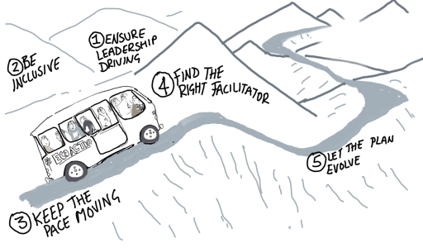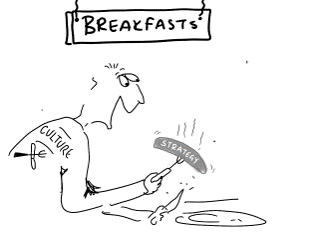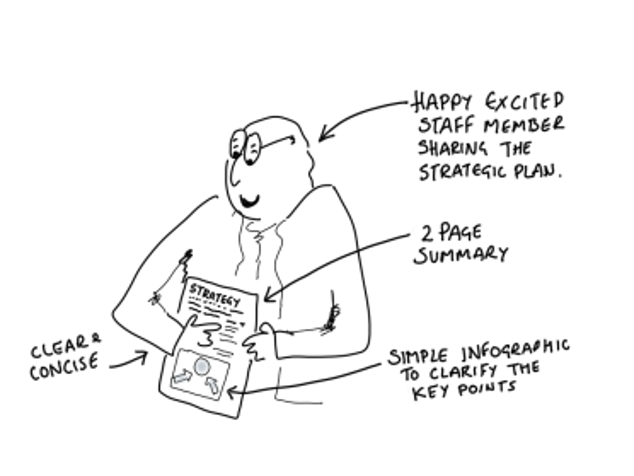Section 08: Documenting and adapting
8.1 Keep the plan short and simple
The best strategic plans are short, simple and visual.
There should be a one or two page summary that clearly states the direction of travel, communicating the chosen priorities for the future – what the NGO will do more of and less of. Staff should be able to identify these priorities and describe how their own work fits into the whole. It should be concise and memorable. Ideally it should be visual with an image that conveys the essence of the NGO’s priorities.
While there is no template for a strategic plan as each organisation is different, these are some of the expected elements INTRAC expects to see in a strategic plan:
Executive Summary (one page only)
Background
When started & its development
Key supporters and funders
Achievements to date
Identity of organisation
Vision
Mission
Values
Summary of theory of change
Strategy process
Briefly how done and who involved
Analysis of external environment
Analysis of strengths and weaknesses
Strategic priorities
Choices made - Prioritised core roles/programmes/approaches over next 3-5 years. Preferably described pictorially
Strategic aims - each with core areas
Implications of the strategy
Implications for current programmes – stop, improve, start
Implications for organisation – e.g. structure, staffing, capacity building
Implications for funding and resources
A strategic plan is only useful in so far as it affects actions. The document itself, does not matter unless it is put into practice. Good intentions are not enough.
8.2: Regular reviews
Regular reviews enable the NGO to learn from what is working as planned and what needs to change. They are vital for adaptive, agile management.
In annual strategy review meetings, it is worth analysing:
How has the environment changed in the last 12 months?
What has been working well over the last 12 months?
What is not working as hoped?
What are we learning from this?
What do we need to adapt and change and shift direction?
What then are the priorities for the next 12 months?
“Culture eats strategy for breakfast”
Management writer Peter Drucker coined this famous quote to show that however good the strategic plan is, what really matters is what the organisation does with it. Organisational culture and behaviour ultimately matter much more than any document in determining direction.
8.3 Final thoughts
Strategic planning may not be an easy process. There are obviously many constraints and limitations, but also important benefits of a good process. Strategic planning helps NGOs look up from relentless activity to maintain their relevance and effectiveness in a rapidly changing world. Strategic planning may not be the answer to all NGO problems, but it certainly is a critical issue to address. While every situation is unique, key principles of good practice exist:
Ensure leadership driving
Be inclusive of those closest to the action (beneficiaries and field staff)
Keep the pace moving
Find the right facilitator
Review regularly to let the plan evolve
Last updated


